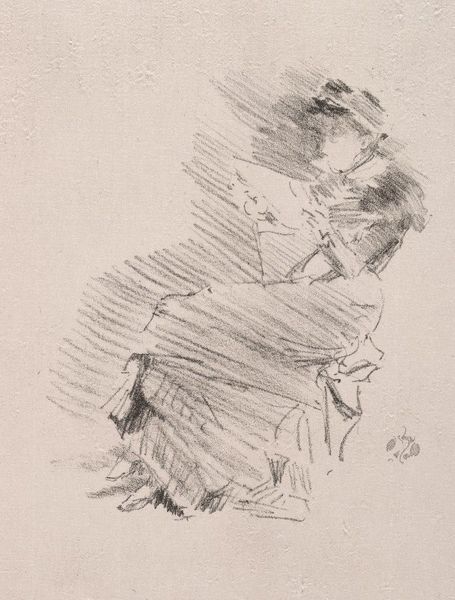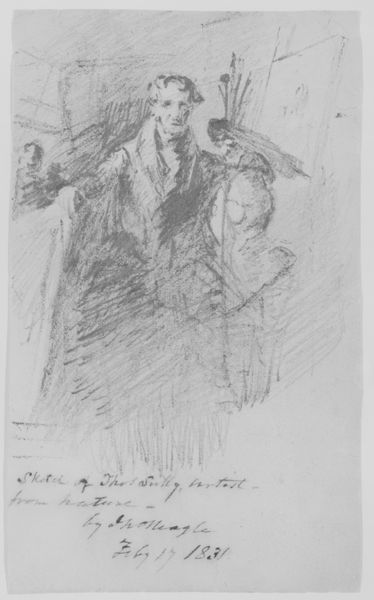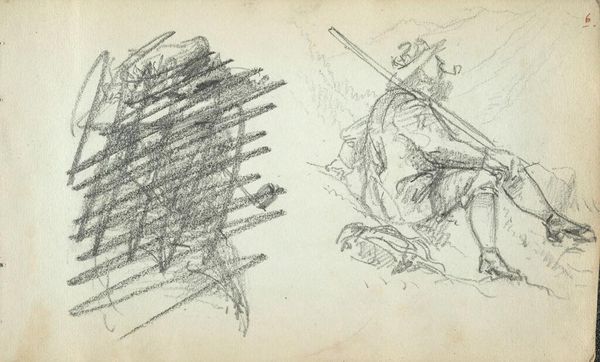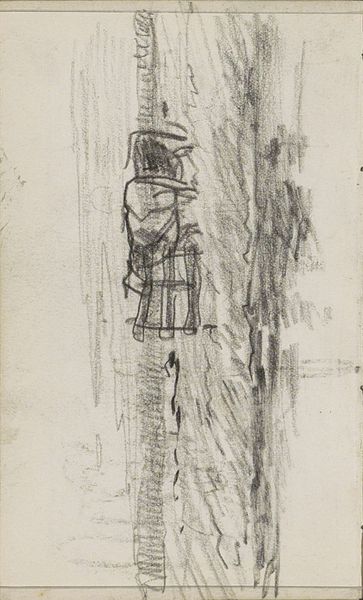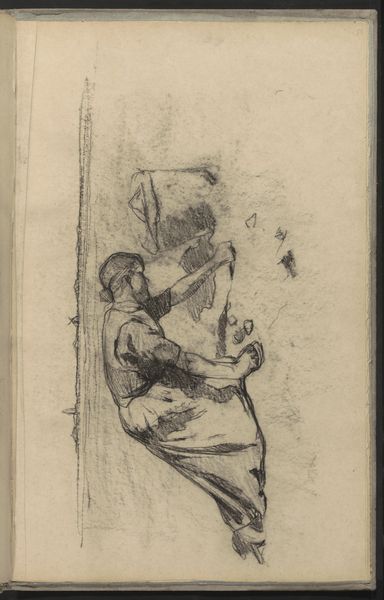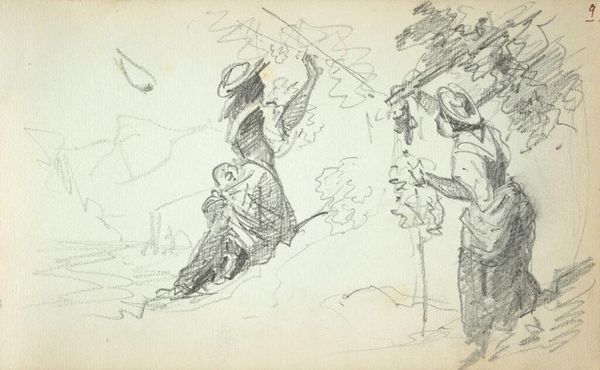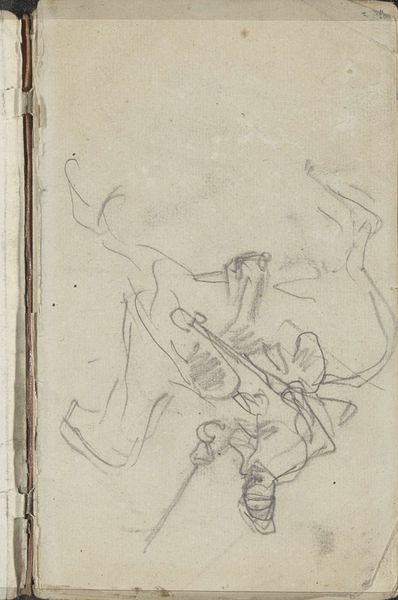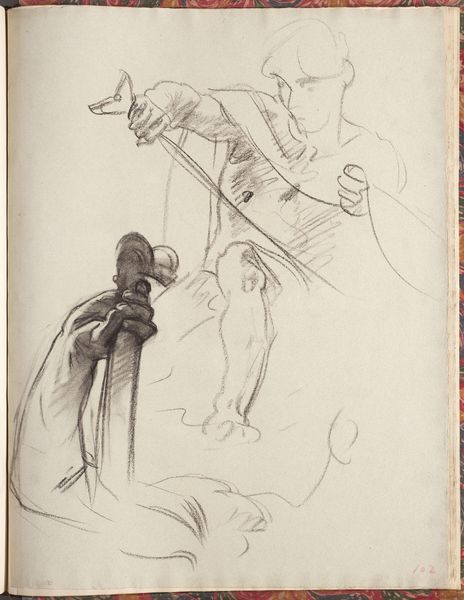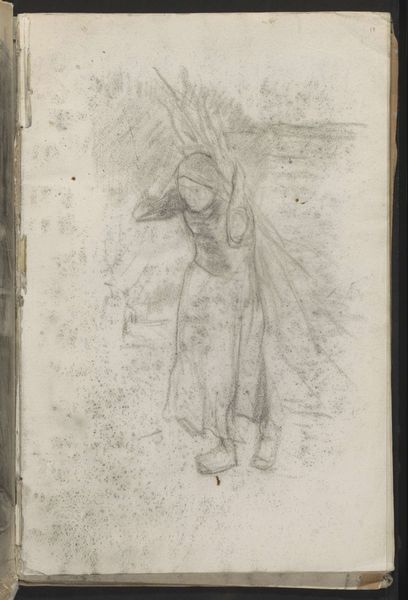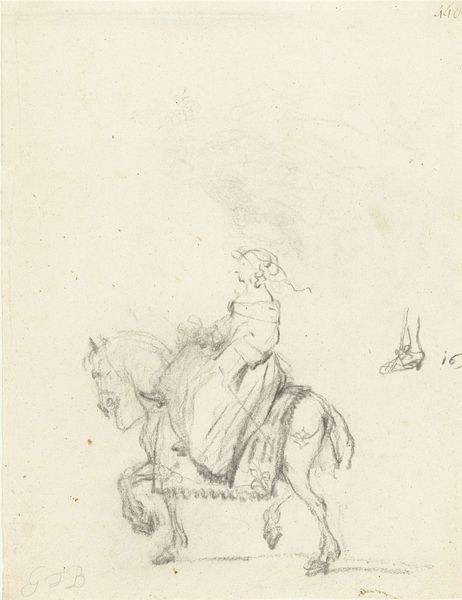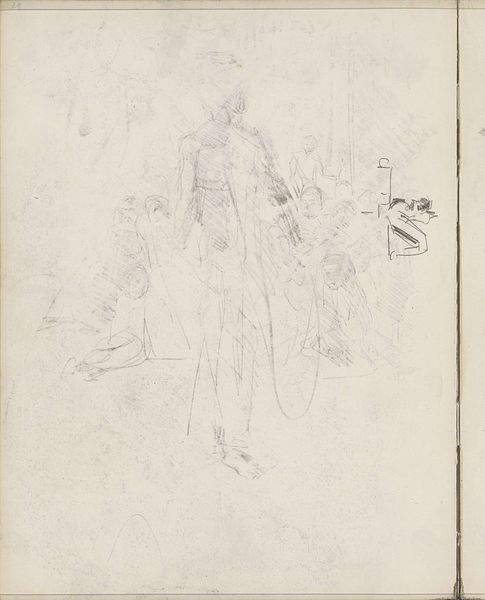
drawing, charcoal
#
portrait
#
drawing
#
charcoal drawing
#
figuration
#
charcoal
#
realism
Copyright: Public Domain: Artvee
Curator: Welcome. We’re standing before "Standing and Sitting Gypsy Woman", a charcoal drawing by James Ensor. What's your initial impression? Editor: There's a quiet somberness. The soft charcoal strokes lend it a smoky, almost dreamlike quality. The figures, particularly the standing woman, seem caught between movement and stillness, their forms emerging from the shaded background. It gives me the sense of raw creation in action. Curator: It's tempting to immediately contextualize this drawing within the problematic history of depicting marginalized communities like the Romani. Ensor was, like many of his time, engaging with stereotypes, and we must consider the power dynamics at play when an artist represents a culture other than their own. How does that impact your reading? Editor: I see that. And yet, looking at the charcoal itself, you sense the very texture and weight that has built up, layer upon layer to produce the subjects. Even the paper, probably inexpensive at the time, now reveals the marks and pressures from its making—the work breathes its own material reality. The composition shows evidence of work in progress. I think it complicates any one reading. Curator: Absolutely. We also have to account for Ensor’s particular interest in masks and costuming; for him, they weren’t just representational, but performative, potentially disruptive of rigid social categories. These "Gypsy Women," while undoubtedly reflecting a biased gaze, also destabilize any straightforward reading of identity. The charcoal lines, though suggestive, leave room for ambiguity. Is this documentation, or is it something more elusive? Editor: That interplay of reality and artifice comes out clearly in how he works with charcoal. See how he renders the clothing, rough, heavy? Almost sculpted on the page. He foregrounds a physicality through his process of drawing, a tactile immediacy that you would probably find at odds with other work by Ensor. It makes the piece so powerful, even if problematic as we have discussed. Curator: And so the artwork, in its materiality and construction, allows for multiple readings, shaped both by its historical context and our own contemporary perspectives. We can find empathy and recognize appropriation in equal measure. Editor: Exactly. A vital reminder that even within a seemingly simple medium, there's a density of social practice that shapes the way we consider our culture and values. It makes it impossible for me to look away, to consider my own contribution to perpetuating and dismantling problematic images. Curator: Well said. Thank you.
Comments
No comments
Be the first to comment and join the conversation on the ultimate creative platform.
